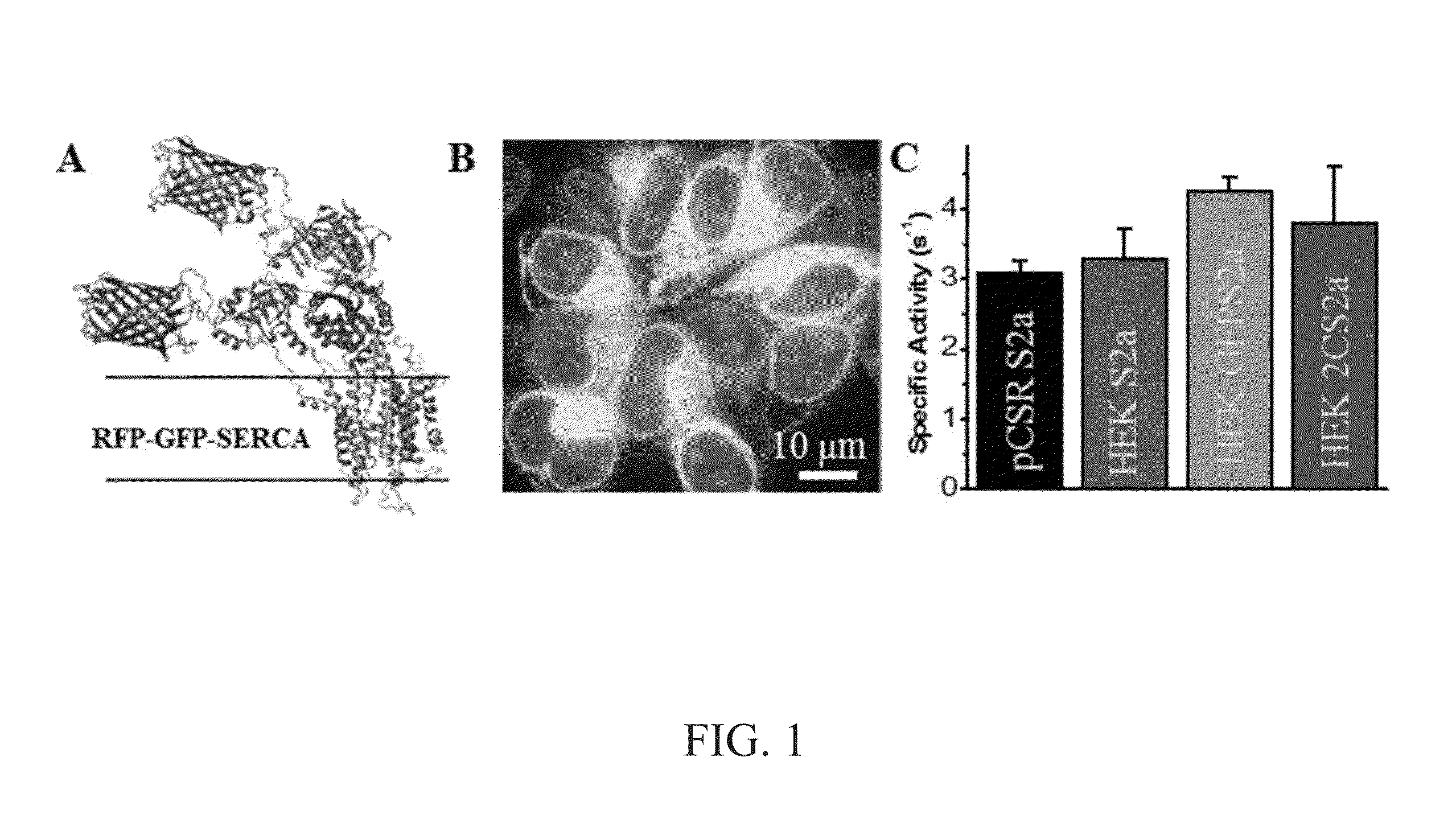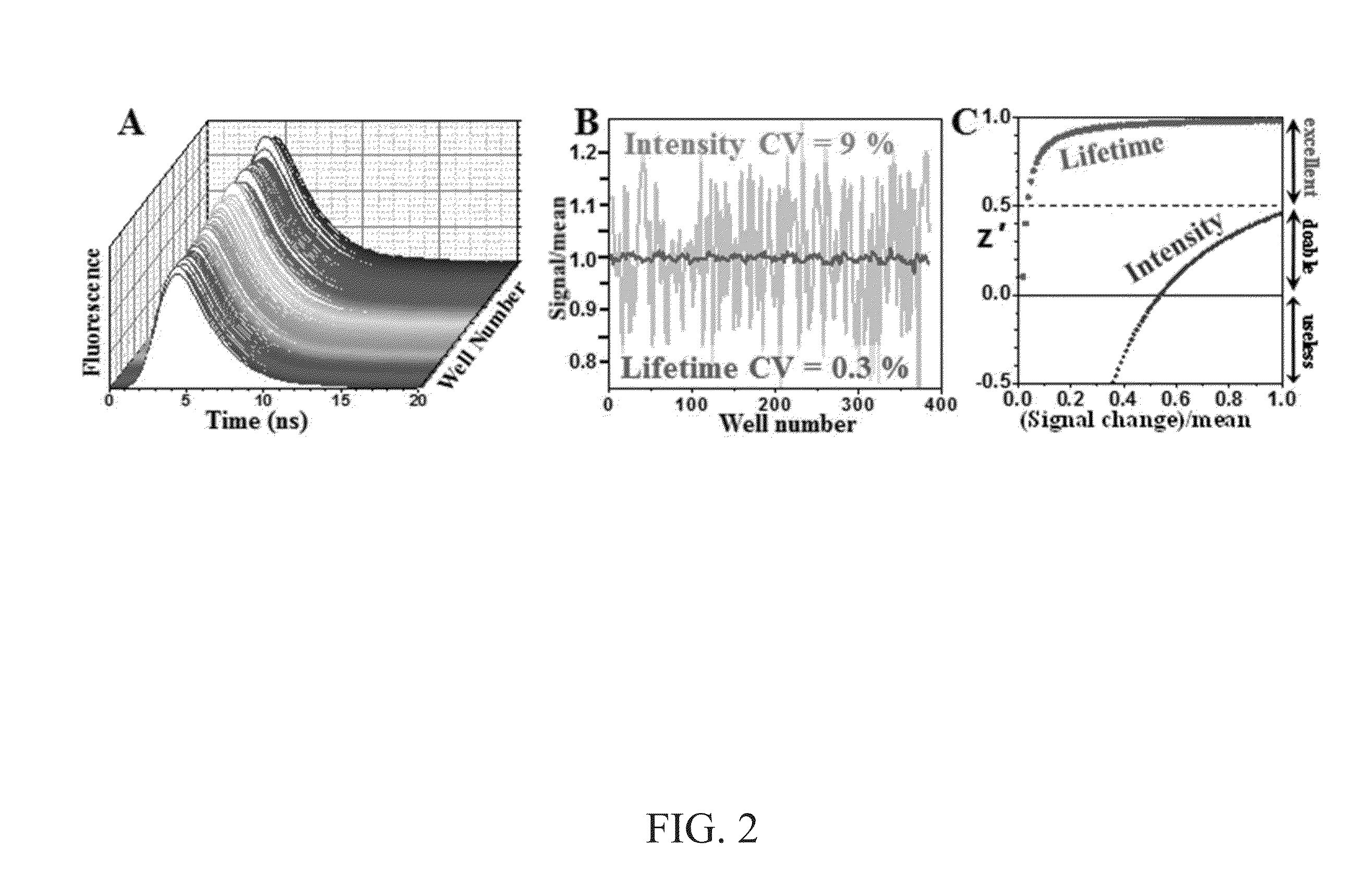High-throughput, high-precision methods for detecting protein structural changes in living cells
a protein structure and high-precision technology, applied in the field of high-throughput, high-precision methods for detecting protein structural changes in living cells, can solve the problems of limited precision and noise in intensity-based measurements, and achieve high-throughput screening, high precision, and affect the function of serca
- Summary
- Abstract
- Description
- Claims
- Application Information
AI Technical Summary
Benefits of technology
Problems solved by technology
Method used
Image
Examples
example 1
[0064]Discovery of Enzyme Modulators Via High-Throughput Time-Resolved FRET in Living Cells
[0065]A “2-color” SERCA (sarco / endo-plasmic reticulum calcium ATPase) biosensor and a unique high-throughput fluorescence lifetime plate-reader (FLT-PR) was used to develop a high-precision live-cell assay designed to screen for small molecules that perturb SERCA structure. A SERCA construct, in which red fluorescent protein (RFP) was fused to the N terminus and green fluorescent protein (GFP) to an interior loop, was stably expressed in an HEK cell line that grows in monolayer or suspension. Fluorescence resonance energy transfer (FRET) from GFP to RFP was measured in the FLT-PR, which increases precision 30-fold over intensity-based plate-readers without sacrificing throughput. FRET was highly sensitive to known SERCA modulators. A small chemical library was screened and ten compounds that significantly affected 2-color SERCA FLT were identified. Three of these compounds reproducibly lowered...
example 2
Fluorescence Lifetime Plate Reader: Resolution and Precision Meet High-Throughput
[0095]Described here is a nanosecond time-resolved fluorescence spectrometer that acquires fluorescence decay waveforms from each well of a 384-well microplate in 3 min with signal-to-noise exceeding 400 using direct waveform recording. The instrument combines high-energy pulsed laser sources (5-10 kHz repetition rate) with a photomultiplier and high-speed digitizer (1 GHz) to record a fluorescence decay waveform after each pulse. Waveforms acquired from rhodamine or 5-((2-aminoethyl)amino) naphthalene-1-sulfonic acid dyes in a 384-well plate gave lifetime measurements 5- to 25-fold more precise than the simultaneous intensity measurements. Lifetimes as short as 0.04 ns were acquired by interleaving with an effective sample rate of 5 GHz. Lifetime measurements resolved mixtures of single-exponential dyes with better than 1% accuracy. The fluorescence lifetime plate reader enables multiple-well fluoresce...
PUM
| Property | Measurement | Unit |
|---|---|---|
| time | aaaaa | aaaaa |
| time | aaaaa | aaaaa |
| PMT voltage | aaaaa | aaaaa |
Abstract
Description
Claims
Application Information
 Login to View More
Login to View More - R&D
- Intellectual Property
- Life Sciences
- Materials
- Tech Scout
- Unparalleled Data Quality
- Higher Quality Content
- 60% Fewer Hallucinations
Browse by: Latest US Patents, China's latest patents, Technical Efficacy Thesaurus, Application Domain, Technology Topic, Popular Technical Reports.
© 2025 PatSnap. All rights reserved.Legal|Privacy policy|Modern Slavery Act Transparency Statement|Sitemap|About US| Contact US: help@patsnap.com



